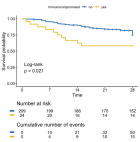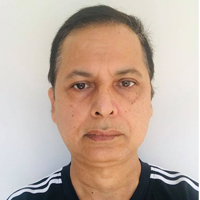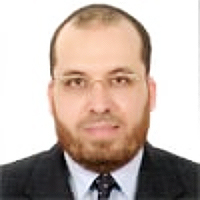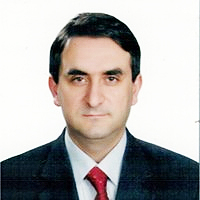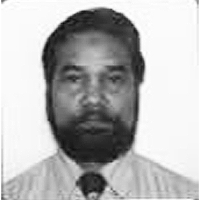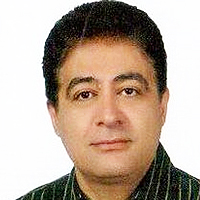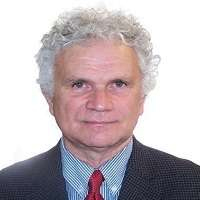About Swami Vivekanand National Institute of Rehabilitation Training and Research
Swami Vivekanand National Institute of Rehabilitation Training and Research
Articles by Swami Vivekanand National Institute of Rehabilitation Training and Research
Comparison of two types of strengthening exercises in upper limbs for improvement of wheelchair propulsion in paraplegics
Published on: 10th February, 2017
OCLC Number/Unique Identifier: 7286422996
Introduction: A reduction in physical activity due to spinal cord injury leads to deconditioning and increased dependency. Manual wheelchair propulsion is a straining form of ambulation and propulsion is based on the use of upper extremities, which are usually capable of producing less force with less efficiency. Theraband can be an exercise mode, which resembles wheelchair activity. Mat exercises are also given for strengthening of upper limb muscles in persons with paraplegia. The aim of this study is to compare effects of both elastic resistance strength training and strengthening by mat activity of upper limb muscles on wheelchair propulsion efficiency in persons with paraplegia.
Materials and Method: The selected subjects were randomly assigned into Theraband and Mat exercise groups with 15 subjects each. Theraband group received theraband strengthening of wheelchair propulsion muscles, whereas mat activity group received mat strengthening of wheelchair propulsion muscles. Total duration of treatment was 5 days per week for 5 weeks.
Results: Results of the study showed both mat exercise and theraband groups showed significant improvement in wheelchair 15 meter sprint test and wheelchair propulsion for 50 meters in paraplegics due to spinal cord injury. However, theraband group showed significantly more improvement.
Conclusion: The study revealed that theraband exercises for improving upper limb strength for wheelchair propulsion is superior to strengthening through mat exercise.
Comparison of Lung Function of normal and persons with chronic low back pain and its relation with duration and severity of Chronic Low Back Pain
Published on: 13th October, 2017
OCLC Number/Unique Identifier: 7286424899
Introduction: Chronic low back pain is one of the most prevalent musculoskeletal disorders. Studies have shown certain relations between physical fitness and chronic low back pain (CLBP) by examine some measures of physical fitness. The aim of study was to measure lung function using winspiro PRO in patient with CLBP versus normal healthy individual, and relation of lung function with duration and intensity of CLBP.
Methodology: The study population is comprised of a total of 120 adult persons. 60 subjects with chronic low back pain (41 male and 19 female) with a mean age of 30.69 years (+4.34) and 60 normal individual (39 male and 21 female) with mean age of 29.00 years (+5.34).
Results:The result of comparison of the respiratory parameter forced vital capacity (FVC), and maximal voluntary ventilation (MVV) of individual with CLBP show a significant difference as compare to the normal healthy population. In unrelated ‘t’ test the patient with CLBP (N=60) of age 30.51(SD±4.33), height 169cm (SD±1.23), weight 57.86(SD±7.73) and body mass index (BMI) 20.46 (SD±2.54) show a significant difference in respiratory parameter FVC ( t=17.244, P=0.000), and MVV ( t=11.048, P=0.000) as compare to the normal healthy persons (N=60) of age 29.79 (SD±5.28), height 170cm (SD±1.13), weight 59.40(SD±6.97) and BMI 21.59 (SD±3.29).In patient group- FVC range is 34.0% to 75.00% (52.85%±9.30). MVV range is 45.0% to 86.80%. (63.11%±12.06)In control group FVC range is 63.90% to 98.83% (83.63%±7.59). MVV range is 63.00% to 98.00% (78.96%±7.86).
Conclusions:The overall result of the study show that there is a significant difference in the respiratory parameter that is FVC (forced vital capacity), and the MVV (maximum voluntary ventilation) in persons with chronic low back pain as compare to the healthy person of same age, height, weight and body mass index (BMI).
Effectiveness of Soft Tissue Mobilisation as an adjunct to the Conventional Therapy in patients with Ankylosing Spondylitis
Published on: 5th January, 2018
OCLC Number/Unique Identifier: 7869163621
Introduction: The HRMT (Human Resting Myofasial Tone) factor plays an important role to initiate the trigger the inflammation at the disease site in Ankylosing spondylitis (AS) as in all spondyloarthropathies. The incidence of fibromyalgia is higher in AS and a limiting factor to undergo the exercise program.
Aim of the study: To know the effectiveness of soft tissue mobilisation in patients with Ankylosing Spondylitis when it used as an adjuncts to the conventional exercises.
Methodology: 40 subjects were randomly assigned in to experimental and conventional group. Experimental group (n=20) received conventional exercises along with soft tissue mobilisation and the conventional group (n=20) received only conventional exercises (flexibility exercises, aerobic exercise and breathing exercise) for a period of 4 weeks, 5days/week.
Results: The result of the study showed that both the conventional and experimental groups improved significantly in stiffness, pain and physical function aspects after treatment. However the experimental group had a greater change as compared to conventional group.
Conclusion: The study demonstrates that soft tissue mobilisation has an effect when it used before the conventional exercise in patients with ankylosing spondylitis.

HSPI: We're glad you're here. Please click "create a new Query" if you are a new visitor to our website and need further information from us.
If you are already a member of our network and need to keep track of any developments regarding a question you have already submitted, click "take me to my Query."











